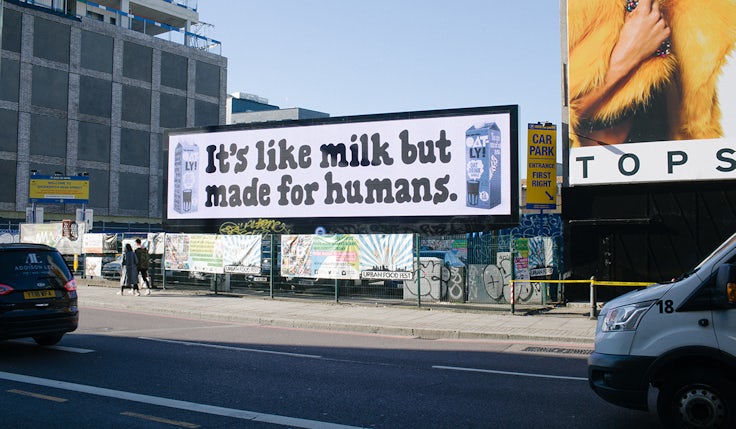Generative AI, digital skills, ageism: 5 interesting stats to start your week
We arm you with all the numbers you need to tackle the week ahead.
Generative AI is marketers’ top consumer trend
Some 59% of marketers have singled out generative AI as the most important consumer trend to watch, according to Mediaocean’s mid-year advertising outlook report.
Social video is also building momentum, with 57% of marketers singling it out as a significant trend.
More than half of marketers plan to increase spend on social platforms, with TikTok continuing to grow in importance.
More than half of marketers are also planning to increase ad budgets on connected TV. But there has been a 40% increase in concern over managing reach and frequency of connected TV and digital channels.
Marketers’ top three areas of investment – performance-driven paid media, measurement and attribution capabilities, and brand advertising – remain unchanged from last year.
While, creative testing and analysis saw the biggest jump, up 27% on last year. There has also been a 16% decrease in concern over talent retention and access to expertise – a sign that the industry is finding ways to manage resources in a post-pandemic environment.
Source: Mediaocean
Advertising makes majority of women feel ‘bad about ageing’, study shows
 The majority of adult women (55%) in the UK say their portrayal in the media makes them feel “bad about ageing”.
The majority of adult women (55%) in the UK say their portrayal in the media makes them feel “bad about ageing”.
Four-fifths (82%) of women in their 50s believe they’re represented poorly in advertising, a figure which rises to 89% for women over 60.
Older consumers are frustrated by being shown in “old fashioned clothing” and “acting kooky”. Breaking this down further, women in their 60s are concerned they’re being depicted as lonely and “lacking” in relationships, while women in their 70s and 80s “hate” being shown as frail or lonely.
Companies in the work and employment industry were deemed the most ageist, with 73% of older women saying they were shown in a negative light, and one in five of the 590 adults surveyed highlight a lack of diversity in how brands highlight ethnic backgrounds and body diversity.
“The survey results show that the photos used in the media aren’t representing women in a positive and realistic way, and often resort to inaccurate and limited stereotypes such as old-fashioned clothing, lack of relationships, and frailty,” says Dr Carole Easton, chief executive at the Centre for Ageing Better.
Source: Centre for Ageing Better/Ageism Is Never In Style
Mail engagement hits one-year high in Q1
 Mail engagement and effectiveness reached its highest level in a year in Q1 2023, according to new research from the Joint Industry Currency for Mail (JICMAIL).
Mail engagement and effectiveness reached its highest level in a year in Q1 2023, according to new research from the Joint Industry Currency for Mail (JICMAIL).
The data, which was based on a survey of one thousand households a month, showed that 95% of mail was engaged with by the consumer (as in some form of physical engagement rather than being immediately thrown away) and 30% of mail prompted some level of commercial action from customers such as purchases, voucher redemption and website visits.
This level of engagement and effectiveness is the highest return for mail in over a year even at a time when inflation remains at very high levels.
JICMAIL also claim that mail open, read and retention rates have experienced year-on-year growth for the third quarter in a row. Figures show that 75% of mail was read in Q1, 65% was opened and 46% was still ‘live’ in the home (meaning it had not been discarded) after 28 days.
Ian Gibbs, director of data leadership and learning at JICMAIL, says: “Despite stubbornly high levels of inflation, there have been a few rays of sunshine in Q1 with the IPA Bellwether report pointing towards increased advertiser confidence in 2023 and PwC reporting that high street store closures have slowed.
“Against this backdrop mail continues to be a vital channel in efficiently delivering key messages to consumers when times are tough; and for those advertisers that are active in the channel, they have seen the reward of improved commercial effectiveness throughout the customer journey.”
Source: JICMAIL
Most businesses need new skills to achieve growth plans
 The majority (83%) of senior executives in the UK say their organisation’s growth depends on rapidly evolving their employees’ skills and capabilities to meet customer and business needs.
The majority (83%) of senior executives in the UK say their organisation’s growth depends on rapidly evolving their employees’ skills and capabilities to meet customer and business needs.
Nearly all (92%) of businesses say their teams will require new skills to achieve these growth plans, yet, just 27% say they currently have the digital skills needed to achieve these goals.
Digital transformation is key to this shift, with 63% saying their customers are looking to replace offline experiences with digital journeys.
The rate at which skills need to be updated is also increasing. While a third of respondents suggested they needed to update digital skills at least quarterly in 2019, this has grown to 55% of teams saying they now need to add new skills and knowledge as least monthly.
Stefan Tornquist, senior vice-president of learning and research at Econsultancy, says: “The digital skills gap is one of the greatest inhibitors of the world’s economies. Ongoing technological change, digital transformation and shortening business lifespans can be a great opportunity or challenge – depending on how primed your business is to build on ever-evolving digital capabilities. As ecommerce, data-driven marketing and customer centricity straddle new channels and disciplines, this will become even more pronounced.”
Source: Econsultancy
Most women’s football fans are not women
 While men’s football audience groups can be fragmented and divided by club allegiances, new research suggests women’s football audiences are made up of bigger, mass consumer groups.
While men’s football audience groups can be fragmented and divided by club allegiances, new research suggests women’s football audiences are made up of bigger, mass consumer groups.
The core audiences for women’s football are identified as ‘sporty professional parents’, making up 27.5% of fans, followed by ‘sports entertainment fans’ at 21.5%, with key interests in football, music, gaming, TV and social media.
Other audience segments include ‘modern mums’ (9.2%), ‘trendy gen Zers’ (8.4%), ‘sports journalists’ (7.6%), ‘grassroots footballers’ (7.6%) and ‘sports participants’ (5%).
Meanwhile, just 38% of the fan base for the England women’s team are women. And ‘sporty professional parents’ only made up 5.4% of men’s football audiences, compared to 27.5% of women’s football audiences.
Source: Fifty.io







